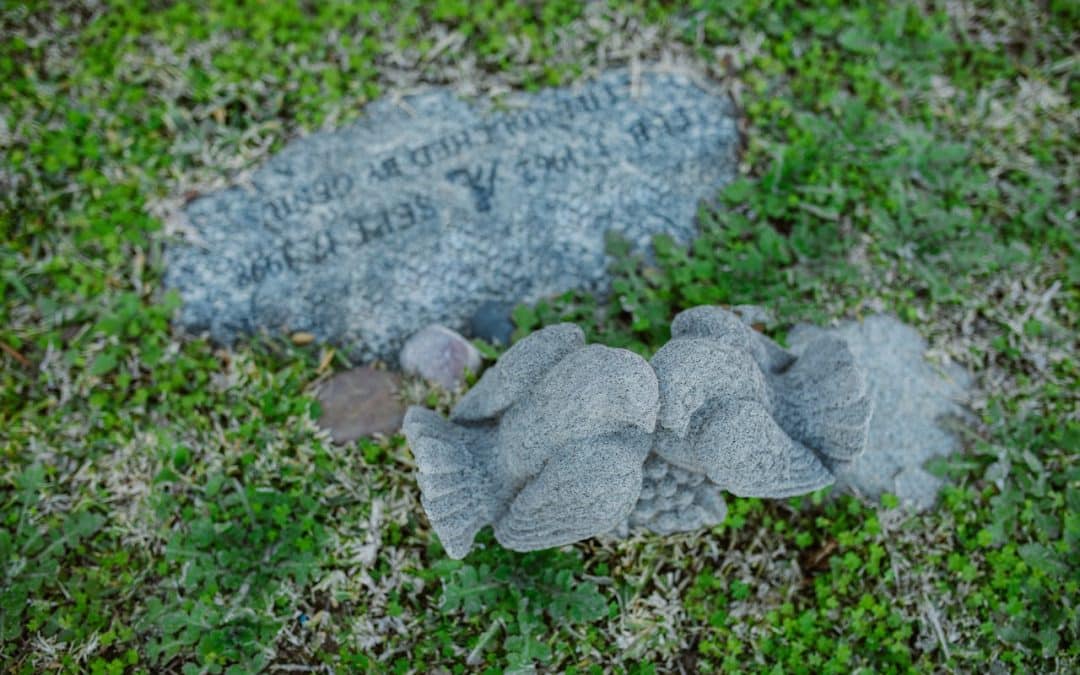Choosing a memorial for a loved one is a deeply personal decision, one that often focuses on aesthetics, durability, and a fitting tribute. However, in an increasingly environmentally conscious world, many families are also considering the ecological footprint of their choices. The materials used in memorialization can have varying impacts on the environment, from extraction to processing and long-term presence. At Shastone, we believe in providing comprehensive information to help families make choices that align with their values, including those concerning environmental stewardship.
Let’s explore the environmental considerations of common memorial materials:
1. Granite: The Durable Standard
Granite is by far the most popular material for headstones due to its exceptional durability, wide range of colors, and resistance to weathering.
- Extraction: Granite is quarried from the earth, a process that involves heavy machinery, energy consumption, and can lead to landscape disruption, dust, and noise pollution at the quarry site.
- Processing: Cutting, shaping, and polishing granite requires significant energy and water. Some finishing processes may involve chemicals, though granite itself is a natural stone.
- Transportation: As granite is heavy, transporting it from quarries (which can be international) to manufacturing facilities and then to cemeteries contributes to carbon emissions.
- Longevity: Its extreme durability means it lasts for centuries with minimal degradation, reducing the need for replacement and its associated environmental impact over a very long period.
- Overall Impact: While quarrying and processing have an environmental footprint, granite’s longevity and low maintenance (compared to softer stones) can make its long-term impact relatively lower than materials that degrade faster.
2. Marble: The Classic but Sensitive Choice
Marble has been used for memorials for centuries, prized for its classic beauty and ease of carving. However, its environmental profile differs from granite.
- Extraction & Processing: Similar to granite, marble quarrying involves significant energy, machinery, and potential habitat disruption. Processing also consumes energy and water.
- Chemical Weathering: Marble (calcium carbonate) is highly susceptible to acid rain and atmospheric pollutants. These react with the stone, causing dissolution, pitting, and loss of inscriptions over time. This ongoing degradation means it doesn’t last as long as granite in exposed environments and can require more intervention (cleaning, restoration) that may involve chemicals.
- Waste Generation: Processing marble can generate a substantial volume of stone fragments and slurry waste, which requires proper management to prevent water pollution.
- Overall Impact: Its susceptibility to environmental degradation means that while beautiful, its long-term environmental interaction can be more reactive, potentially requiring more resources for upkeep or replacement over centuries compared to granite.
3. Bronze: The Enduring Metal
Bronze markers, often set flush with the ground on a granite base, offer a distinct aesthetic and are known for their longevity.
- Production: Bronze is an alloy primarily of copper and tin. The mining of these metals and the smelting process are energy-intensive and can involve significant environmental impacts, including habitat disruption, water pollution, and air emissions.
- Corrosion: While highly durable, bronze undergoes oxidation, forming a protective patina (often green). In polluted environments or near the ocean, it can suffer from “bronze disease” (active corrosion) if not properly maintained, which might involve chemical treatments.
- Longevity: Bronze memorials are exceptionally long-lasting, often for hundreds of years, reducing the need for replacement.
- Recyclability: Bronze is a highly recyclable metal, meaning that at the very end of its lifespan (which is extremely long for a memorial), the material can be repurposed.
- Overall Impact: The initial production has a higher energy and resource footprint due to metal mining and smelting, but its extreme durability and recyclability contribute to a favorable long-term environmental profile.
4. Emerging Eco-Friendly and Sustainable Options
A growing movement towards “green burial” and eco-friendly memorials has led to alternative materials with a significantly reduced environmental impact.
- Biodegradable Urns/Pods: Made from materials like bamboo, recycled paper, or mycelium (mushroom spores), these are designed to fully decompose, returning to the earth. Some even incorporate seeds to grow a memorial tree.
- Natural Stone (Locally Sourced/Unpolished): Choosing natural stone that is locally quarried significantly reduces transportation emissions. Leaving the stone in a more natural, unpolished state also reduces energy and chemical use in processing.
- Reclaimed/Recycled Materials: Reusing stone from old buildings or repurposing existing headstones reduces the demand for new quarrying and minimizes waste.
- Benefits: These options minimize carbon footprint, avoid toxic chemicals (like embalming fluids in green burials), conserve natural resources, and promote biodiversity, often blending seamlessly with natural landscapes.
Making an Informed Choice with Shastone Memorial Materials
At Shastone, we understand that selecting a memorial is a profound decision. We are committed to offering a range of high-quality materials and guiding you through the environmental considerations of each. Whether you choose the enduring strength of granite, the classic beauty of bronze, or explore newer eco-friendly alternatives, our goal is to help you create a lasting tribute that honors your loved one’s memory while aligning with your values for environmental responsibility.

